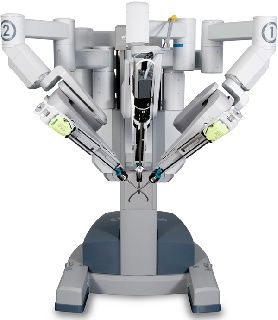World Laparoscopy Hospital, located in Gurgaon, India, is a leading center for laparoscopic and robotic surgery. The hospital is known for its expertise in the field of minimally invasive surgery, and has been at the forefront of technological advances in this area. Recently, the hospital announced that it will be using a new single incision robotic surgery technique for certain surgical procedures. In this essay, we will explore the new single incision robotic surgery technique being used by World Laparoscopy Hospital, including its benefits, challenges, and potential impact on the field of minimally invasive surgery.
The new single incision robotic surgery technique being used by World Laparoscopy Hospital is a minimally invasive surgical approach that involves making a single small incision in the patient's body and inserting a robotic surgical system through it. This system consists of a camera and surgical instruments that are controlled by the surgeon using a console. The single incision robotic surgery technique allows for a more precise and efficient surgical approach, while also reducing the number of incisions needed and the associated scarring.
One of the main benefits of the single incision robotic surgery technique is that it can be used for a wide range of surgical procedures, including gallbladder removal, hysterectomy, and hernia repair. The technique is particularly useful for cosmetic procedures, as it results in minimal scarring and can lead to faster recovery times. The technique is also associated with fewer complications compared to traditional open surgery, such as reduced blood loss and a lower risk of infection.
Another benefit of the single incision robotic surgery technique is that it allows for greater precision and control during surgical procedures. The robotic surgical system used in the technique allows for highly precise movements, which can result in improved surgical outcomes and reduced complications. The system also provides a three-dimensional view of the surgical site, which can help surgeons make more accurate surgical decisions.
However, there are also some challenges associated with the use of the single incision robotic surgery technique. One of the main challenges is the learning curve associated with the technique. Like any new surgical approach, it requires specialized training and experience to become proficient. Additionally, not all patients may be good candidates for the technique, depending on factors such as the location of the surgical site and the patient's underlying health conditions.
Another challenge is the cost of the robotic surgical system used in the technique. The system is expensive, and not all medical institutions may have access to it. However, the potential benefits of the technique, such as reduced complications and faster recovery times, may offset the cost of the system over time.
Despite these challenges, the use of the single incision robotic surgery technique represents an important advancement in the field of minimally invasive surgery. The technique offers numerous benefits over traditional open surgery, including reduced scarring, fewer complications, and faster recovery times. It also allows for greater precision and control during surgical procedures, which can lead to improved outcomes and reduced complications.
The use of the single incision robotic surgery technique at World Laparoscopy Hospital represents an important step forward in the field of minimally invasive surgery. The hospital is known for its expertise in laparoscopic and robotic surgery, and the use of this new technique further underscores its commitment to providing the best possible care for its patients. The hospital is also well-positioned to provide specialized training and experience in the technique to other medical professionals, helping to advance the field of minimally invasive surgery as a whole.
As the use of robotic surgery continues to grow, it is likely that the single incision robotic surgery technique will become an increasingly important tool for surgeons. The technique offers numerous benefits over traditional open surgery, and is associated with fewer complications and faster recovery times. As medical institutions become more familiar with the technique, and as the cost of robotic surgical systems decreases over time, it is likely that the technique will become more widely used for a variety of surgical procedures.
However, it is important to note that the single incision robotic surgery technique is not appropriate for all patients or surgical procedures. Patients who are not good candidates for the technique may still require traditional open surgery, which can result in longer recovery times and increased risk of complications. Additionally, not all medical institutions may have access to the robotic surgical system needed for the technique, which may limit its availability in certain areas.
Finally, it is important to continue to evaluate the safety and efficacy of the single incision robotic surgery technique over time. While early results have been promising, further research is needed to fully understand the benefits and limitations of the technique, and to identify potential complications or adverse effects associated with its use. As more medical institutions adopt the technique, and as more patients undergo the procedure, it will be important to closely monitor outcomes and continue to refine the approach as needed.
In conclusion, the single incision robotic surgery technique represents an important advancement in the field of minimally invasive surgery. The technique offers numerous benefits over traditional open surgery, including reduced scarring, fewer complications, and faster recovery times. While there are challenges associated with the technique, such as the learning curve and cost of the robotic surgical system, the potential benefits make it an important option for certain surgical procedures. The use of the technique at World Laparoscopy Hospital further underscores the hospital's commitment to providing the best possible care for its patients, and to advancing the field of minimally invasive surgery as a whole. As the use of robotic surgery continues to grow, it is likely that the single incision robotic surgery technique will become an increasingly important tool for surgeons, and will help to further improve the safety and efficacy of minimally invasive surgical procedures.
